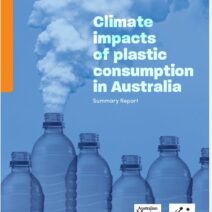The climate crisis looms large over humanity, akin to a dark storm cloud that threatens to envelop the world. It is a challenge that necessitates not just individual action but, more importantly, robust political will and decisive governmental intervention. Governments wield considerable power, serving as the architects of legislative frameworks and facilitators of sustainable practices. Thus, the onus is on them to develop policies that can effectively mitigate the catastrophic effects of climate change.
The central tenet of combating the climate crisis lies in multifaceted policies that interlace economic, social, and environmental fabrics. First and foremost, the transition to a low-carbon economy must be propelled through rigorous energy policies that prioritize renewable resources over fossil fuels. Governments must incentivize the development of solar, wind, and other alternative energy sources, treating them as the new golden grains in an agricultural revolution. These measures can include tax incentives for businesses that adopt renewable technologies, subsidies for electric vehicles, and substantial investments in green infrastructure.
Additionally, strict regulations on greenhouse gas emissions serve as a necessary ballast to ensure that the transition does not falter. Creating a cap-and-trade system could offer an intriguing metaphorical watershed; it allows the market to regulate itself while ensuring that the limits imposed do not drown out the efforts to curtail carbon emissions. A well-structured cap-and-trade system would not only incentivize businesses to innovate but could also generate government revenue which might be reallocated towards sustainability initiatives.
Furthermore, the significance of urban planning cannot be overstated in the discourse on climate action. Governments must promote sustainable city designs that incorporate green spaces, efficient public transportation, and climate-resilient infrastructure. By transforming urban landscapes to be more sustainable, we effectively fortify communities against the adversities posed by climate change. Smart city initiatives can weave technology with sustainability; for instance, employing data analytics to optimize energy consumption in real-time can be tantamount to sharpening the quill for a more precise narrative on energy use.
Inextricately linked to urban planning is the notion of societal engagement in climate policies. Governments serve as the linchpin that connects scientific knowledge with public awareness. Educational outreach programs aimed at disseminating information about climate change can empower citizens to actively participate in mitigating its effects. Innovative campaigns, akin to artistic brushstrokes on a canvas, can invigorate community involvement, making climate action an integral part of societal ethos. When communities coalesce to advocate for sustainable policies, the impact is magnified exponentially.
The global dimension of the climate crisis necessitates international collaboration. Governments must not operate in silos but rather engage in robust diplomatic dialogues to share best practices. It’s crucial to craft international agreements that not only set ambitious emissions targets but also provide mechanisms for financial and technological support to developing nations. Such partnerships can create a fabric of global solidarity in combating climate change, transforming what was once a disparate effort into a cohesive global movement.
Moreover, integrating climate considerations into all facets of policy-making is essential. This comprehensive approach can be likened to the holistic nature of an ecosystem, wherein the interdependence of various elements engenders resilience. Agricultural policy, for example, should advocate for sustainable farming practices that reduce carbon footprints. Similarly, transportation policy must favor electric and public transport options over combustion engine vehicles, creating an ecological symbiosis that enhances overall sustainability.
However, even the most well-crafted policies may falter without absorbing the lessons from history. Past failures in climate action serve as cautionary tales. Policies enacted solely for short-term economic gain can mold a tectonic plate of environmental compromise. To avoid repeating such missteps, governments should adopt a precautionary principle—prioritizing preventive measures over reactive ones. Through foresighted governance, they can ensure that climate policies are proactive rather than merely reactionary.
The quest for environmental justice must also permeate the structure of governmental policies. Recognizing that certain communities disproportionately bear the brunt of climate change is vital; policies should be restorative, ensuring those vulnerable populations receive the support they need. This necessitates an intersectional approach to policy formulation. By weaving equity into the fabric of climate action, governments can create more just and inclusive frameworks that resonate with all citizens.
Finally, the narrative of climate action is incomplete without addressing the fiscal dimension. Governments possess the power to redirect investments towards sustainability. They can catalyze a green economy by channeling public funds into renewable energy projects, green jobs, and sustainable technology innovations. This investment strategy not only contributes to combating climate change but also fosters economic resilience. The macroeconomic ripple effects of such policies can lead to sustainable job creation, thereby ushering in a new age of prosperity characterized by environmental stewardship.
In conclusion, the multifarious avenues through which governments can combat the climate crisis resonate like a symphony, each policy akin to a note that contributes to a larger, harmonious goal. From shaping energy policies and urban planning to fostering global cooperation and economic investment, the potential for meaningful change is unfurled. With unyielding resolve and visionary leadership, governments have the capacity to shepherd humanity through the storm into brighter, greener horizons, transforming the unwavering tides of climate change into the winds of hopeful progress.






